Archived Water Damage Blog Posts
How to Identify and Address Hidden Water Leaks
2/19/2024 (Permalink)
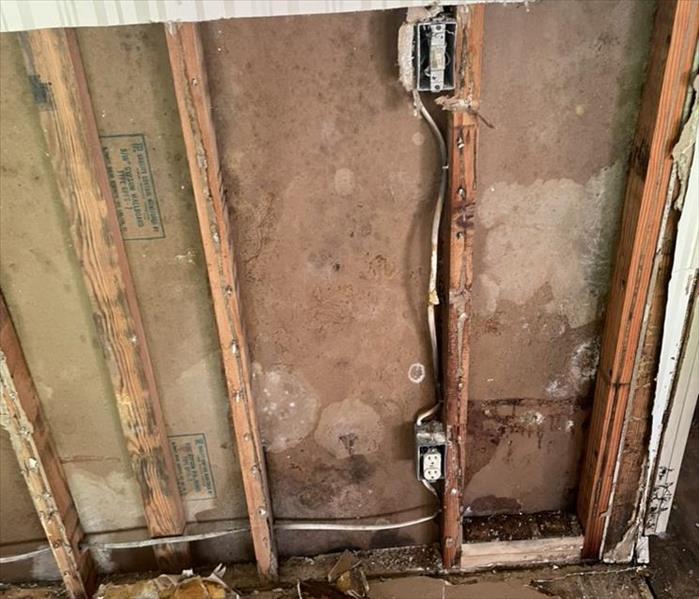 Identifying and addressing hidden water leaks quickly is essential to protect your property from extensive damage and costly repairs.
Identifying and addressing hidden water leaks quickly is essential to protect your property from extensive damage and costly repairs.
Water leaks, often concealed within walls, ceilings, or underground, can silently wreak havoc on your property, leading to structural damage, mold growth, and even increased utility bills. Identifying and addressing hidden water leaks early is crucial in preventing extensive damage.
Keep an Eye on Your Water Meter
Monitor your water meter regularly, especially when no water is in use. A sudden increase in readings could indicate an undetected leak. Turn off all water sources and check if the meter continues to register water usage.
Check for Visible Signs of Water Damage
Look out for water stains, discoloration, or peeling paint on walls, ceilings, or floors. Soft or sagging drywall may also indicate hidden water leaks. Investigate any musty odors, which could be a sign of mold due to water damage.
Inspect Plumbing Fixtures and Appliances
Check for leaks around plumbing fixtures, such as sinks, toilets, and showers. Inspect appliances like dishwashers, refrigerators, and washing machines for any signs of water accumulation or moisture.
Use a Water Leak Detection Device
Consider using water leak detection devices or sensors that can alert you to leaks by detecting changes in moisture levels. Place these devices near potential leak sources or in areas prone to water damage.
Examine Outdoor Areas and Irrigation Systems
Check outdoor faucets, hoses, and irrigation systems for leaks or pooling water. Ensure proper drainage away from the foundation to prevent water from seeping into your property.
Consult Professional Water Leak Detection Services
If you suspect a hidden water leak but cannot identify its source, seek assistance from professionals like SERVPRO of North Fort Myers. Our team of experts utilizes specialized equipment to pinpoint hidden leaks without causing unnecessary damage.
Quickly Address Identified Leaks
Upon identifying a water leak, take immediate action to fix it. Whether it's repairing a faulty pipe, replacing a damaged fixture, or sealing gaps, swift intervention can prevent further damage and mitigate risks.
Identifying and addressing hidden water leaks quickly is essential to protect your property from extensive damage and costly repairs. At SERVPRO®, we specialize in water damage restoration and are ready to assist you in mitigating the effects of hidden leaks. Contact SERVPRO® for professional water leak detection and restoration services. Let us help you protect your property against the damaging effects of hidden water leaks.
Trust SERVPRO of North Fort Myers – Your Partner in Identifying and Addressing Hidden Water Leaks for a Safer, Healtheir Home.
IICRC Standards for Water Damage Restoration
10/9/2023 (Permalink)
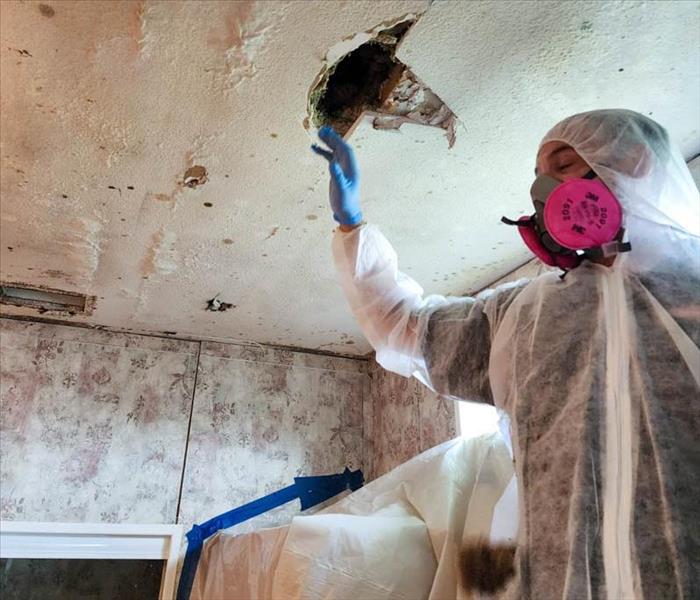 Understanding the IICRC standards for water damage restoration is essential when selecting a restoration company for your Ft. Myers, FL, property.
Understanding the IICRC standards for water damage restoration is essential when selecting a restoration company for your Ft. Myers, FL, property.
When faced with water damage in your Ft. Myers, FL, property, it's crucial to entrust the restoration process to professionals who adhere to industry standards. The Institute of Inspection, Cleaning and Restoration Certification (IICRC) is the foremost authority in the field of water damage restoration. In this blog, we explore the importance of the IICRC standards and how they ensure effective and thorough restoration for your property.
1. What Are the IICRC Standards?
The IICRC establishes guidelines and best practices for the water damage restoration industry. These standards are developed by industry experts and are widely recognized as the benchmark for quality and professionalism. Adhering to these standards ensures that restoration professionals provide consistent, high-quality services that meet or exceed customer expectations.
2. Comprehensive Training and Certification
To uphold the IICRC standards, SERVPRO® technicians undergo extensive training and certification programs. Our professionals receive specialized instruction in water damage restoration, structural drying techniques, mold remediation, and much more. This ensures that they possess the knowledge and expertise necessary to handle any water damage situation effectively.
3. Proper Assessment and Documentation
One of the key aspects of the IICRC standards is conducting a proper assessment and documenting the extent of the water damage. SERVPRO® technicians follow a systematic approach, evaluating the affected areas, identifying the source of the water intrusion, and documenting the damage comprehensively. This documentation plays a crucial role in insurance claims and can ensure that you receive the maximum compensation you are entitled to.
4. Advanced Equipment and Techniques
The IICRC standards emphasize the use of advanced equipment and techniques during the restoration process. SERVPRO® of North Fort Myers follows these guidelines and utilizes state-of-the-art equipment to extract water, dry affected areas, and restore your property to its pre-damage condition. Our technicians are trained in employing specialized techniques to mitigate water damage efficiently and prevent further issues, such as mold growth or structural deterioration.
5. Ongoing Education and Adaptation
The water damage restoration industry is constantly evolving, and the IICRC standards are regularly updated to reflect the latest advancements and best practices. SERVPRO® is committed to staying at the forefront of the industry by participating in ongoing education programs. This ensures that our technicians are knowledgeable about the latest techniques, technologies, and safety protocols, guaranteeing the highest level of service for our customers.
Understanding the IICRC standards for water damage restoration is essential when selecting a restoration company for your Ft. Myers, FL, property. By adhering to these standards, SERVPRO® of North Fort Myers ensures that your property is restored with the utmost care, professionalism, and efficiency. Our highly-trained technicians follow the guidelines set by the IICRC, utilizing advanced equipment and techniques to mitigate the damage and restore your property to its pre-damage condition. Trust SERVPRO® for all your water damage restoration needs, and experience the highest standard of service in the industry.
What Can Cause a Flooded Basement? Exploring Common Culprits
7/17/2023 (Permalink)
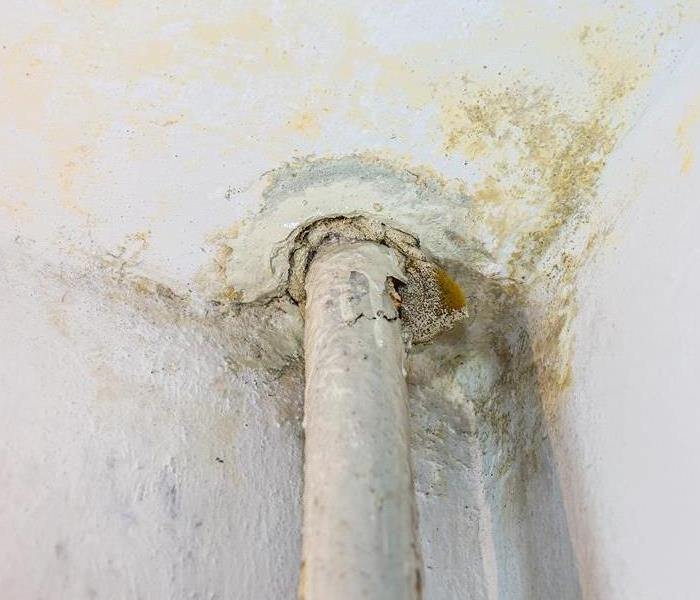 Regular maintenance, inspections, and timely repairs are key to protecting your basement from water damage.
Regular maintenance, inspections, and timely repairs are key to protecting your basement from water damage.
A flooded basement can be a homeowner's worst nightmare. Not only does it create a mess, but it can also lead to significant property damage and pose potential health risks. Understanding the common causes of basement flooding is essential for homeowners to take preventive measures and minimize the risk. In this blog post, we will explore several factors that can cause a flooded basement, providing valuable insights to help you protect your home.
Heavy rainfall and poor drainage
One of the most common causes of basement flooding is heavy rainfall. When the ground becomes saturated with water, excess water can seep into your basement through cracks in the foundation or windows. Poorly designed or clogged gutters and downspouts can also contribute to water pooling around the foundation, increasing the likelihood of basement flooding.
Foundation cracks and leaks
Cracks in the foundation walls or floor provide an easy entry point for water to infiltrate your basement. Over time, natural settlement, soil pressure, or temperature fluctuations can cause the foundation to develop cracks. Additionally, hydrostatic pressure from groundwater can push water through foundation walls. Regular inspections and timely repairs of foundation cracks are crucial to prevent basement flooding.
Faulty or overwhelmed sump pump
A sump pump is designed to pump out excess water from your basement, preventing flooding. However, if the pump is not functioning correctly or becomes overwhelmed due to excessive water intrusion, it can lead to a flooded basement. Regular maintenance, including testing the sump pump, cleaning the pit, and ensuring proper discharge, is essential to keep it in optimal working condition.
Burst or leaking pipes
Plumbing issues, such as burst pipes or leaking supply lines, can cause significant water damage in your basement. These issues can result from freezing temperatures, aging pipes, or poor installation. Regularly inspecting your plumbing system and addressing any leaks or weak spots promptly can help prevent basement flooding due to pipe-related issues.
Sewer backups
Sewer backups can occur when the municipal sewer system becomes overwhelmed by heavy rainfall or blockages. When the sewer line is unable to handle the excess water or waste, it can cause sewage to back up into your basement through floor drains or toilets. Installing a backwater valve and avoiding flushing inappropriate items down the drains can help reduce the risk of sewer backups.
Improperly graded landscaping
The grading around your home plays a vital role in directing water away from the foundation. If the slope of your yard is incorrect or the landscaping is poorly designed, it can lead to water pooling around the foundation, increasing the chances of basement flooding. Ensuring proper grading and implementing appropriate landscaping measures, such as installing French drains or rain gardens, can help prevent water from seeping into your basement.
A flooded basement can be a homeowner's nightmare, but understanding the common causes can help you take proactive measures to prevent such occurrences. Whether it's heavy rainfall, foundation issues, sump pump failures, plumbing problems, sewer backups, or landscaping concerns, addressing these factors can significantly reduce the risk of basement flooding. Regular maintenance, inspections, and timely repairs are key to safeguarding your basement and protecting your property from water damage.
3 Reasons To Worry About Water In Your Crawlspace
3/18/2023 (Permalink)
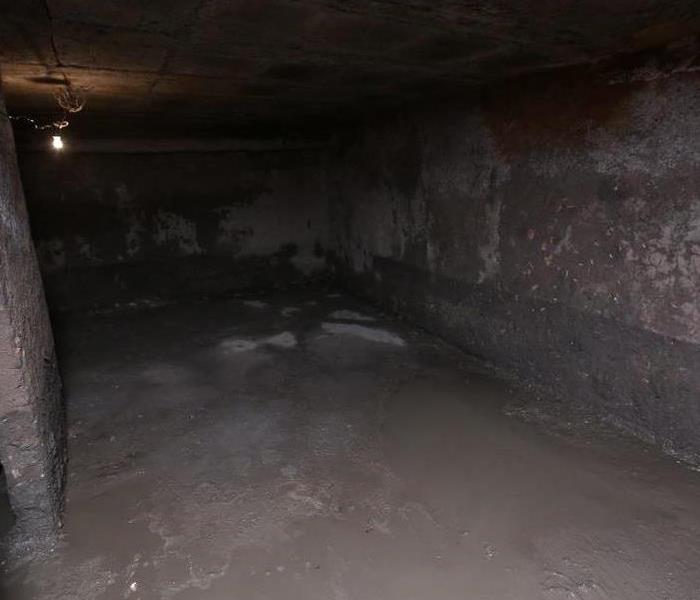 If you have water in your crawlspace, give SERVPRO a call to help prevent secondary damages.
If you have water in your crawlspace, give SERVPRO a call to help prevent secondary damages.
When it comes to the home, there are a lot of things that can go wrong. You might have bad wiring or foundation issues that need fixing, and sometimes those problems can be hidden away. But what about when something goes wrong with your crawlspace? What is a crawlspace anyway? And why should you worry about water in your crawlspace? Let's take a look at these questions.
What is a crawlspace and what is its purpose?
When you think of a crawlspace, you probably picture an enclosed space with dirt floors and lots of spiders. In reality, it's more like a small unfinished basement: there are no windows or even doors that lead outside.
A crawlspace is a space below the main floor of a building and exists to create a buffer between your home and the wet earth below. They're usually not insulated and can be damp, dirty, and very unappealing. There are several reasons why you should worry about water in your crawlspace:
- It can cause mold and mildew growth
- It can damage the foundation of your home
- It can cause damage to the structural support beams
Water damage from leaks or flooding can cause structural damage as well as foundational problems that may not be visible until later on. This means that if you ignore a leak in your home for too long, you could end up with major problems down the line when everything starts crumbling around you!
3 reasons to never ignore a crawlspace leak
You might not be able to see it, but water damage could be happening in your crawlspace. If you have a crawlspace that's not properly insulated and ventilated, moisture can build up in the air and eventually cause a wide array of problems. Three of the most common issues seen after a crawl space water loss include:
- Mold and mildew begin to grow and spread.
- The structural wood beams in your home could begin to rot.
- The foundation of your home could experience significant damage.
All of these causes could mean problems for your house's stability! It's important to know that it is an easy fix. If you notice any signs of water damage in your crawlspace (like discoloration or mold), call us right away so we can get out there ASAP with our crawlspace repair services before it gets worse!
Water in the crawlspace should be carefully monitored
Water in the crawlspace can be problematic and should be carefully monitored. If you see water in your crawlspace, it's important to understand how it can affect your home and why it's important to address the issue immediately.
The crawlspace is a part of your home that you should take care to protect, especially if it is prone to leaks. The best way to do this is by monitoring the water level in your crawlspace and taking action when necessary. If you notice any signs of leaking or flooding, contact our SERVPRO of Punta Gorda team immediately!
Is your faucet leaking?
3/15/2023 (Permalink)
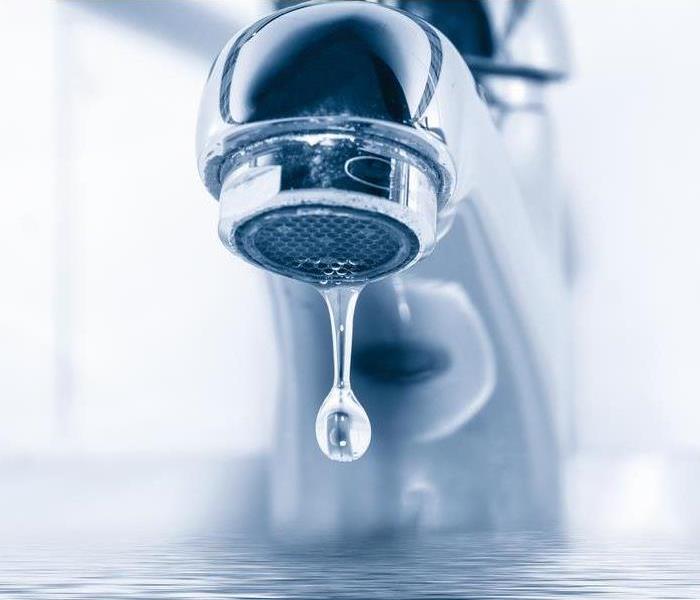 A leaky faucet can result in water damage.
A leaky faucet can result in water damage.
There are few things worse than a leaky faucet. It's like a dripping faucet that just never stops! But did you know that it's often possible to fix a leaky faucet yourself? All you need is the right tools, some patience and persistence, and most importantly, the will to do it yourself.
Turn off the water to the faucet.
You should turn off the water to your faucet at the main valve. If you are not sure where this is, or if it's too hard for you to reach, call a plumber. Once the water is off remove the handles and screws to access the correct part of the handle that may need to be tighten to prevent further leaking
Remove and replace worn washers.
It may be that there is other parts of the faucet that are faulty. Remove the faucet stem and handle, then loosen or unscrew the nut that holds in place whatever device is keeping your faucet from turning on its base. Once you've done this, take out the old worn washer using needle nose pliers or tweezers. Replace it with a new one that is made of stainless steel (not copper) and fits snugly into place over its O-ring seal.
Tighten loose stem packing nuts.
To tighten loose stem packing nuts, you'll need to remove the faucet handle. On most models, this is done by turning a screw below the handle with an Allen wrench. Once you've removed it, take a look at how far apart your stems are from each other--if they're not very far apart at all (less than 1/2 inch), then it's likely that there's not enough pressure in your pipes for water to flow through them properly. The solution here is simple.
Replace damaged parts.
If you've tried to fix your leaky faucet and it still leaks, then you probably need to replace the faucet. You can find new replacement faucets at any hardware or home improvement store.
If you don't want to buy a whole new faucet, but just want to replace one part of the existing unit (like the sprayer), then look for parts online or at your local hardware store.
If you have a leaky faucet, it's likely that the problem can be fixed without replacing the entire unit. In fact, many times it's easier and cheaper to repair than replace.
If your faucet is dripping or leaking around its base, then this is usually an easy fix. simply tighten up the screws holding everything together. If your handles are loose or popping off when you turn them on or off, then simply tighten up those screws as well. If you continue to have a leaking faucet, give the professionals a call. They have the experience to replace your faulty product and restore it back to normal conditions.
How to avoid Water Damage in your Home
1/10/2023 (Permalink)
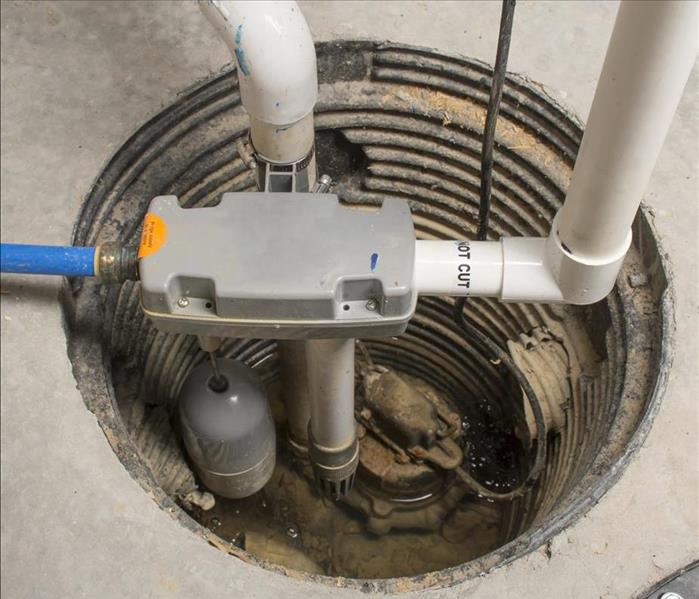 Remember to have a backup sump pump in your Cleveland, FL home.
Remember to have a backup sump pump in your Cleveland, FL home.
How to Avoid Water Damage in your Home
Water damage is one of the most common and costly home repairs, so it's important to know how to prevent it. Water damage can happen in any room of your house, from the basement to the attic. In this article, we'll look at some of the most common sources of water damage and how to protect against them.
Check your roof.
The roof is the most common source of water damage in a home, so it's important to check for leaks and make repairs if necessary. Look for signs of damage, such as:
- Missing or damaged shingles
- Missing or damaged flashing (metal pieces that protect the edges of your roof)
- Damaged gutters or downspouts
- Soffit (the material that covers the underside of your eaves) or fascia (the flat surface overhanging your windows)
Keep an eye on your sump pump.
Sump pumps are small units installed in your basement to collect water, and they’re powered by electricity. But if they fail, or if debris gets sucked into the system, they can cause major problems — even flooding your Cleveland, FL home.
You should have a backup sump pump that isn’t as susceptible to damage as others because it’s not running all day long (you should only run this during heavy rains). It will also be easier for you to maintain since it doesn’t need constant cleaning and repair due to debris build-up. And if there's ever an issue with your primary pump (like when it fails), having a backup will prevent any potential damage from occurring until repairs can be made.
You should have an inspection done every few years on both types of pumps: primary and backup.
Protect your walls.
The best way to protect your walls from water damage is by using a moisture meter. You may have heard of these before, but what are they and how can they help you avoid water damage?
A moisture meter is an instrument used to measure the amount of moisture in your home’s walls and floors. By finding out where the moisture is coming from and how much water damage has occurred, you can determine whether renovating or repairing existing structures in your home will prevent future problems with mold growth or other types of rot.
This tool will allow you to identify areas that need attention so that they don’t cause further damage or illness as time goes on. A professional technician would be able to use this information when planning repairs or renovations.
Inspect the outside of your home.
- Inspect the outside of your home. A leaky roof or foundation can lead to mold, which will cause considerable damage if left unchecked. Look for water damage on the exterior walls and check gutters and downspouts for clogs — if there are any, clear them out so that water can flow freely away from your home.
- Repair any leaks in windows or doors quickly; this will keep water from seeping into your walls as well as prevent mold growth inside your house.
Be aware of appliances.
There are several things you can do to avoid water damage in your home. First, be aware of appliances. Here are some ways that appliances can cause water damage:
- Overloading outlets with too many devices. If you overload an outlet, the circuit breaker will trip or the fuse will blow and stop power from reaching the circuit. This can cause damage to the appliance and result in a fire hazard.
- Leaving appliances on when not in use (like a dishwasher). Appliances like washing machines can leak if they're left running for too long without being emptied or unplugged first. Be sure to turn off any unused appliances before leaving homes for extended periods of time.
Check your pipes.
When you check your pipes, look for leaks. If you find one, be sure to turn off the water supply before attempting repairs. If you don't know how to do this, call a professional plumber — the last thing you want is for the leak to get worse while your doors are open and exposed.
Next, check if any of your old pipes need replacing. You can tell if this is necessary when they're corroded or leaking. If so, make sure to use copper pipes rather than PVC or lead ones: copper won’t corrode as easily over time and will keep your home safer from flooding caused by broken plumbing systems during storms.
Clean up spills quickly.
- Clean up spills quickly. You should mop up small messes as soon as possible to avoid any damage from mold or mildew. If you have hardwood floors, vacuum them immediately with a soft brush attachment to get rid of dust, dirt and sand that can scratch your flooring over time.
- Protect electronic devices. It's best to keep your electronic devices off when it rains because they are more susceptible to water damage in wet conditions; however, if you do need to use them during a storm, make sure they're plugged in, so you don't have any power surges during weather events!
- Check gutters regularly for clogging debris such as leaves or branches that could result in flooding inside your home if left unchecked over time due to clogged gutters overflowing onto sidewalks/driveways below neighbors' homes who may not be able to see this happening until too late.
Knowing how to prevent water damage is half the battle.
Water damage is not only unpleasant to deal with, but it can also be expensive to repair. This is especially true if you have a basement or crawlspace and experience flooding during heavy rainstorms. If you know how to prevent water damage in your home, you can save yourself from having to pay for repairs down the road. The first thing that needs doing before any type of water damage occurs is making sure all appliances are working properly and are turned off when not in use. You should also keep an eye on those faucets and make sure they aren't leaking anywhere in the house by checking them regularly for drips or leaks.
If you do discover any leaks or drips around your house, try fixing them immediately instead of waiting until later because this will reduce the chance of bigger problems occurring later down the road
Water damage is a common problem, and it can be difficult to avoid if you aren’t prepared. But by following these tips and getting to know your Cleveland, FL home better, you’ll have a much better chance of stopping water damage before it happens. If you have water damage call SERVPRO of North Fort Myers, we are here to help!
My Basement Flooded - What Will Insurance Cover?
11/4/2022 (Permalink)
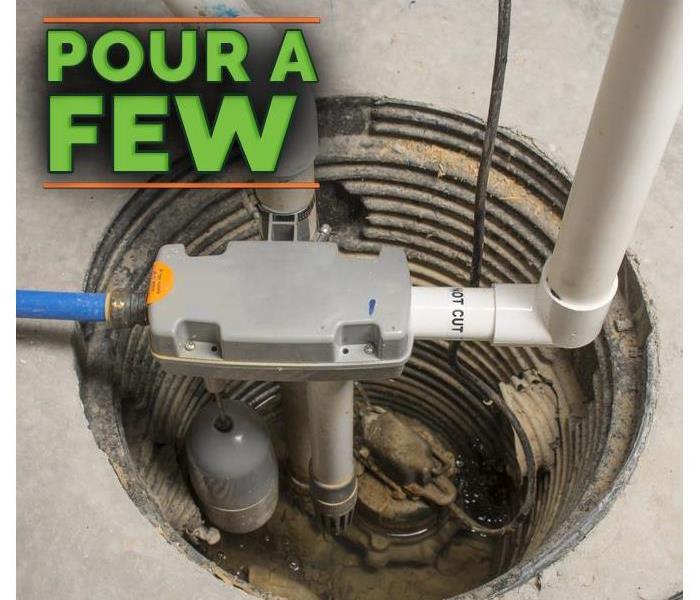 If a sump pump failure caused the flood, your homeowner's insurance may cover it.
If a sump pump failure caused the flood, your homeowner's insurance may cover it.
If My Basement Floods, Will Insurance Pay?
When you're dealing with a flooded basement, the last thing you want to do is call your insurance company and find out that they won't cover it. Flooding can be an expensive problem without any help from your insurer. So how do you find out what your policy covers?
If you don't have flood insurance, your home insurance likely won't cover it.
Homeowners insurance doesn't cover flooding because the damage is caused by a gradual process that's not covered under most policies. However, if your home becomes flooded due to a sudden and accidental event—like an overflowing bathtub or burst pipe—your homeowners’ policy will pay for repairs up to its limit. This may be less than the cost of repair work required after a major storm or hurricane passes through an area and causes widespread flooding, which can cause significant property damage before moving on elsewhere.
If a sewer line backup caused the flood, your homeowner's insurance may cover it.
The key word here is "may."
A sewer line backup is considered an "insured peril" under most homeowner's policies, which means that if the cause of the flooding was not your fault and it occurred due to a covered incident (like rain or wind), then you should be able to file a claim for damages. However, this does not mean that your insurance will pay for all those costs; rather, the policy will reimburse you for certain expenses related to the damage caused by the flood.
If a sump pump failure caused the flood, your homeowner's insurance may cover it.
Sump pumps are designed to pump water away from the house and into a nearby drainage system or dry well. Sump pumps can fail for several reasons:
- They may be clogged with dirt or other debris.
- The battery may have worn out or died.
- The motor of the sump pump might overheat and burn out.
If your sump pump failed because of any one of these problems, then you could be covered by your homeowner's insurance policy for damages related to flooding—but only if it was caused by circumstances beyond your control. To receive coverage from this type of damage, however, there are some important factors that must apply.
Your home insurance might cover some of the cost of removing flood water and cleaning and restoring the damaged area.
How much coverage depends on your policy, but many plans will pay for a portion of these costs if you meet certain criteria. For example, if you have a claim for a fire in your basement that was caused by faulty wiring, your insurance company may pay to have the water-damaged walls torn out and replaced with new drywall. But if you’re claiming damage from an overflowing toilet or washing machine overflow, they may not cover it under standard policies. If your home has been significantly damaged or destroyed by flooding, it could be worth buying extra protection through flood insurance if you don't already have it.
If you've had a sewer line backup or sump pump failure, your insurance may cover the damage. If you're unsure about what to do next, speak with an insurance professional who can help you file a claim.
How To Fix a Wet Crawl Space: 6 Things You Need To Do
8/24/2022 (Permalink)
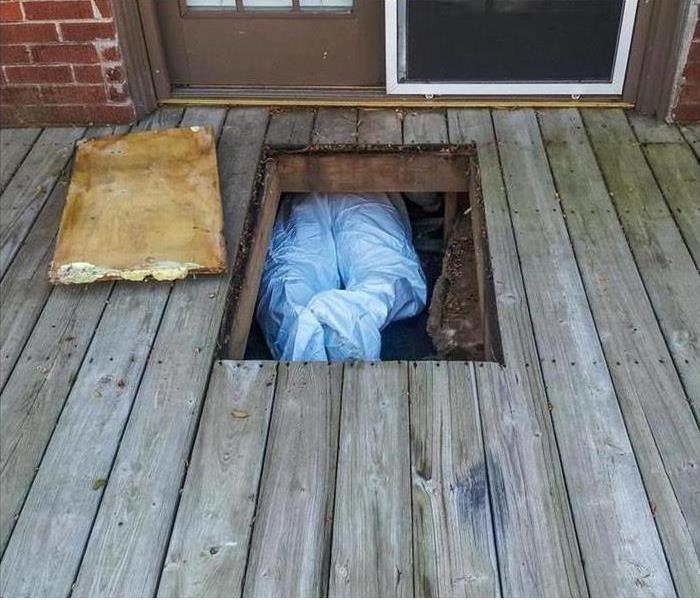 No one wants to deal with a wet crawl space in their home.
No one wants to deal with a wet crawl space in their home.
Six Things That Need To Happen
When there is flooding under your home in North Fort Myers, FL, it can lead to costly and exhausting problems down the road. To prevent mold and other types of damage, you should act soon as you notice a wet crawl space. If you are unsure where to begin, a flood remediation expert can offer professional assistance. Regardless of who does the work, here are six things that need to happen.
1. Protect the Floors Inside Your Home
If the only way to access your crawl space is through the interior of your home, make sure you cover the floors to protect them from any damages that may occur during the work.
2. Identify Water Source
With the help of some reliable work clothes and a flashlight, someone needs to crawl around the wet crawl space to identify where the water is coming from.
3. Dig and Fill a Trench
Next, it is time to start digging. Dig a trench around the entire foundation of your home, with about 1 to 2 feet of spacing between the foundation and the trench. Fill the trench with gravel.
4. Invest in a GFCI Outlet
Do not forget about safety. If you are not particularly handy, this may be another job for a professional, but you need to ensure the space under your house is safe with a protected GFCI power source. Always remember: Electricity and water do not mix.
5. Install a Sump Pump
After prepping the area for the work, water removal is next on the list. Typically, people install a sump pump to do this.
6. Air Things Out
Finally, you want to make sure you install better ventilation. This can help you prevent mold in the future by keeping everything dry.
No one wants to deal with a wet crawl space, but sometimes having one is an inevitable part of seasonal changes or severe weather. Knowing what to do when it happens can help you keep your home protected.
The Best Methods for Clearing a Clogged Drain
4/11/2022 (Permalink)
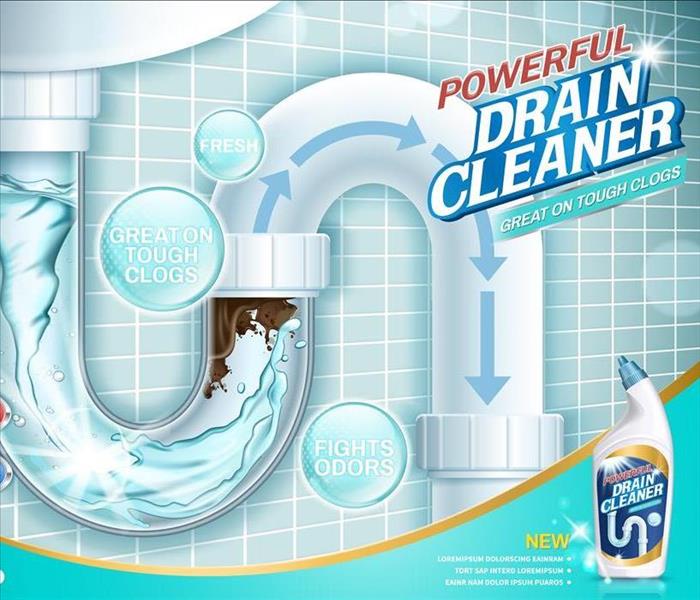 Trained technicians have experience in areas such as sewage cleaning, damage mitigation and structural restoration.
Trained technicians have experience in areas such as sewage cleaning, damage mitigation and structural restoration.
The Most Effective Methods For Unclogging A Clogged Drain
More than likely, you have faced the prospect of a clogged drain and wondered what is the best solution. In general, you want to clear away the clog without causing any damage to your plumbing system. To begin with, you will want to see if there is a mechanical answer to your problem. This begins with something as simple as looking around the drain to see if any visible obstructions are present. For example, you might notice a ball of fur or hair just below the drain trap that you can reach and pull out. The next step is to go beneath the drain and disconnect and clean out the first elbow in the pipes, as items often accumulate in this area.
Gentle Solutions
Plungers or augers are often used to clear a clogged drain. This consists of forcing air into the drain to remove a clog or inserting a wire into the drain to break apart the obstruction. The advantages to a mechanical approach are several:
- Quick and easy
- Inexpensive
- Gentle on pipes
- Simple
Another possibility is to use biological agents to break apart fats, oils and greases. These are eco-friendly and non-toxic. They can take as long as 24 hours to work, but they are gentle on pipes and are effective on obstructions caused by grease, hair and soap.
Harsher Possibilities
A chemical drain cleaner can be fast and effective, but these cleaners come with several negatives: they have the potential to harm pipes, they can cause damage to human skin and they tend to be harmful to the environment. They should be used sparingly and as a last resort to clear a clogged drain.
Any time you face a significant water spill in your home, you should consider the services of a local water damage restoration company in Fort Myers, FL. Trained technicians have experience in areas such as sewage cleaning, damage mitigation and structural restoration.
3 Potential Causes of Sewer Backup
3/9/2022 (Permalink)
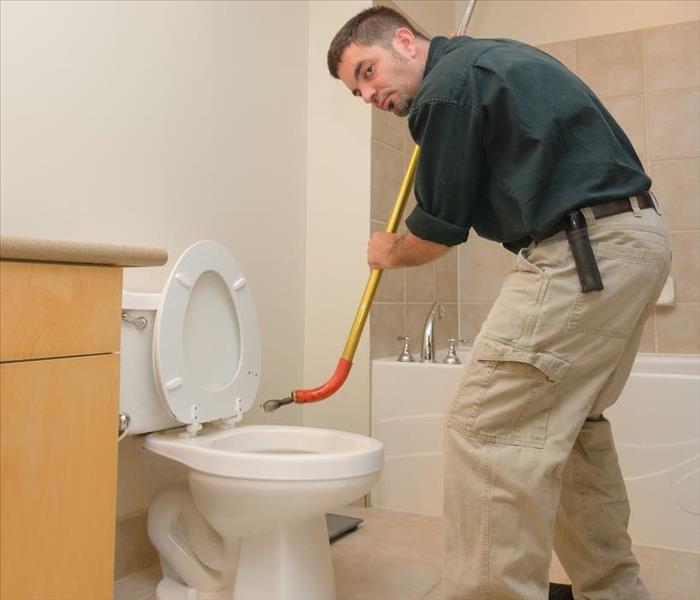 A flooded toilet, blocked-up sink or other issue caused by sewer backup can be a hassle to handle
A flooded toilet, blocked-up sink or other issue caused by sewer backup can be a hassle to handle
Three Potential Sources Of Sewer Backup
If you own or manage a business, you may offer restroom facilities to your customers or clients. If you run a dining place, there are probably sinks. Commercial buildings are usually connected to sewer systems.
A flooded toilet, blocked-up sink or other issue caused by sewer backup can be a hassle to handle. Such occurrences often result in big messes. You may have to contact a professional remediation service in Pirate Harbor, FL, for sewer cleanup and sanitation. An important part of dealing with sewage-related incidents is locating the source or cause to stop further leakage. There are many possible reasons for a sewer backup.
1. Blockages
Sewer backups may often be attributed to clogs in mainlines and pipes. People, both employees and patrons, tend to throw things they should not into drains or flush them down toilets without considering the consequences. Examples of such products and materials include:
- Grease, oils and fats (in restaurants)
- Fibrous food particles (in restaurants)
- Pads and tampons (in public bathrooms)
- Sanitary wipes (in public bathrooms)
2. Damaged Pipes
Broken pipes may malfunction, leading to a sewer backup. What happens is that they fail to properly drain, causing buildups of sewage that overflow, creating the need for sewer cleanup. Damage may be due to a number of factors, such as improper installation.
3. Nature
One unpreventable factor that can lead to waste problems is nature. Earthquakes are one natural phenomenon that can harm pipes, which, as mentioned earlier can affect their performance, resulting in backups. Tree roots often negatively impact sewer lines as well. They are capable of diverting or blocking drainage and wrapping around, crushing, cracking and/or pinching pipes. They may even cause them to burst. Floodwaters from a storm or rising waters can surge through your commercial property's sewer lines or the city's main ones, pushing chemicals and hazardous materials out.
Insurance may or may not cover sewer cleanup.
If the backup originates on your property, you may be able to have it fixed yourself. However, if it arises due to a fault in the public sewer system, officials will most likely have to get involved.
What Not To Do After a Pipe Breaks
2/25/2022 (Permalink)
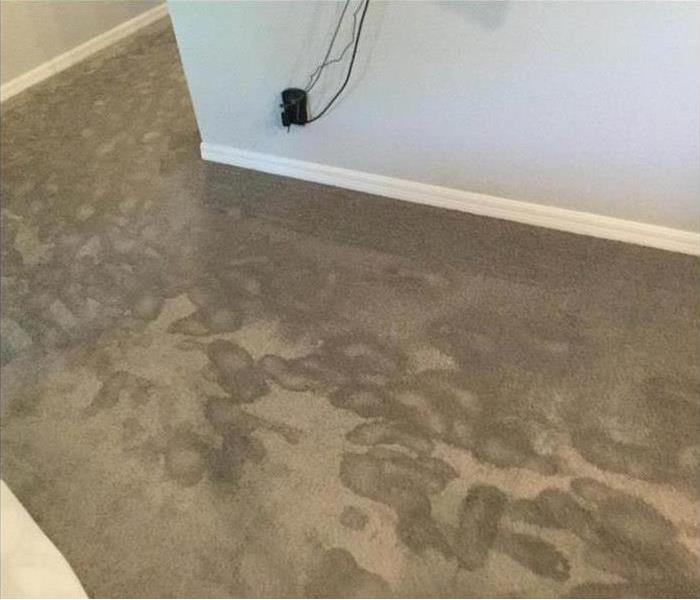 Water damage in a Pirate Harbor, FL.
Water damage in a Pirate Harbor, FL.
When a Pipe Breaks, Don't Do These Things
Panic: It's the one thing that business owners around Pirate Harbor, FL, need to stop doing when they see bursting pipes on their property. That doesn't mean that you should take it easy if you have water damage. Wet conditions are the precursors to all kinds of nasty problems, including:
- Black mold
- Unpleasant smells
- Rotting material
Don’t Put Off Cleanup
Act quickly to reduce your risk of falling prey to these persistent undesirables. If there's even a sliver of a doubt regarding the completeness of your cleanup and drying processes, take a second or third look at your site to prevent these issues.
Don’t Forget to Check Everywhere
Unfortunately, black mold is one of the trademark issues with flooded buildings. Even after you fix a broken pipe and dry up the area, this mold can pop up seemingly out of nowhere. The issue with black mold is that it requires very little moisture to propagate its spores and create massive toxic colonies. Bursting pipes spray, drip and soak, creating a larger footprint than you might imagine. All affected materials should be removed to avoid mold. It is also prudent to dry any crawlspaces or wall cavities thoroughly, by cutting ventilation holes if necessary. Most good water cleanup companies will know just how much needs to be done to get you back to business as usual.
Don’t Ignore Odors
The issues surrounding most secondary water problems pale in comparison to the health hazards and persistence of black mold. Nasty smells can be just as damaging to businesses, however: driving away customers and making workers uncomfortable or unhappy. Rotting material, apart from producing odor, also provides habitats for pests and potentially weakens your building's structure.
The bottom line is that it's better to get your water issues cleaned up as soon as you have a chance. Secondary damage from bursting pipes is costly, both in terms of cleanup invoices and diminished stakeholder confidence.
Keep Your Fire Sprinklers Ready for Action
2/25/2022 (Permalink)
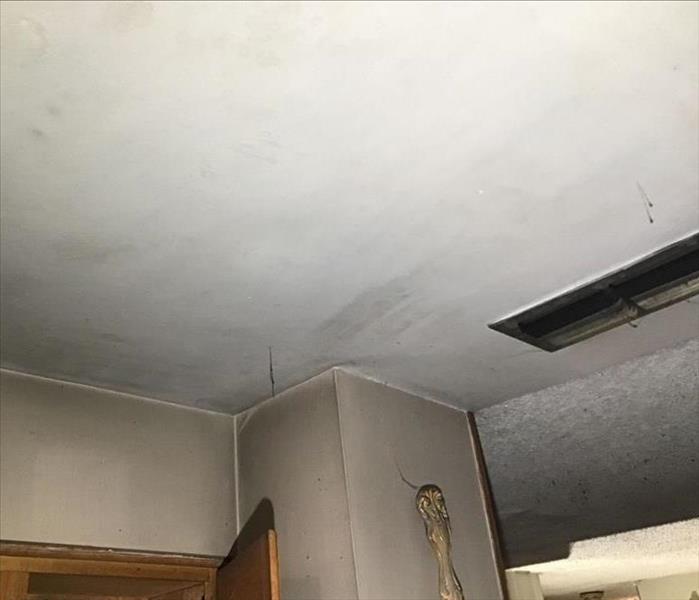 Fires can be scary, but SERVPRO is here to help!
Fires can be scary, but SERVPRO is here to help!
Water-based fire protection systems, or fire sprinklers, should always be kept in working condition and tested periodically to ensure maximum fire suppression capacity. Your sprinklers are your home or business’s first line of defense in the event of a fire, and it may be mandatory in North Fort Myers, FL to conduct routine tests and inspections.
1. Check the age of your sprinkler system. Modern standards require that sprinkler systems adhere to NFPA 25 requirements, but systems in buildings older than 60 years may be outdated and in need of a full replacement.
2. Check your sprinkler installation. Faulty or defective installation equipment and procedures can lead to sprinkler malfunctions in the event of a fire.
3. Always keep your fire sprinklers clean. Dirty fire sprinklers can lead to obstructions that block the water flow and prevent sprinklers from working correctly, or even from detecting and activating in the event of a fire. Many organizations and inspectors recommend an obstruction inspection every five years.
4. Periodically test your sprinkler functions. Sprinklers can be tested in a variety of ways, including simply testing that they work through routine checks. However, more complex testing such as corrosion testing and hydrostatic testing can uncover additional issues that may not be readily apparent on a simple functional test.
5. Immediately replace defective parts. Because sprinklers are so deeply interconnected, replacing a defective part may require replacing larger sections of the sprinkler system. However, this is highly advisable as a matter of safety to prevent any issues should the sprinklers fail to activate in the event of smoke or fire.
One benefit of fire sprinklers is that fire sprinkler cleanup is usually much less messy than cleanup after fire suppression using stronger means. Sprinklers can make a serious difference in prevention of property losses and safety issues, and should be maintained at all times.
 Identifying and addressing hidden water leaks quickly is essential to protect your property from extensive damage and costly repairs.
Identifying and addressing hidden water leaks quickly is essential to protect your property from extensive damage and costly repairs.




 24/7 Emergency Service
24/7 Emergency Service










